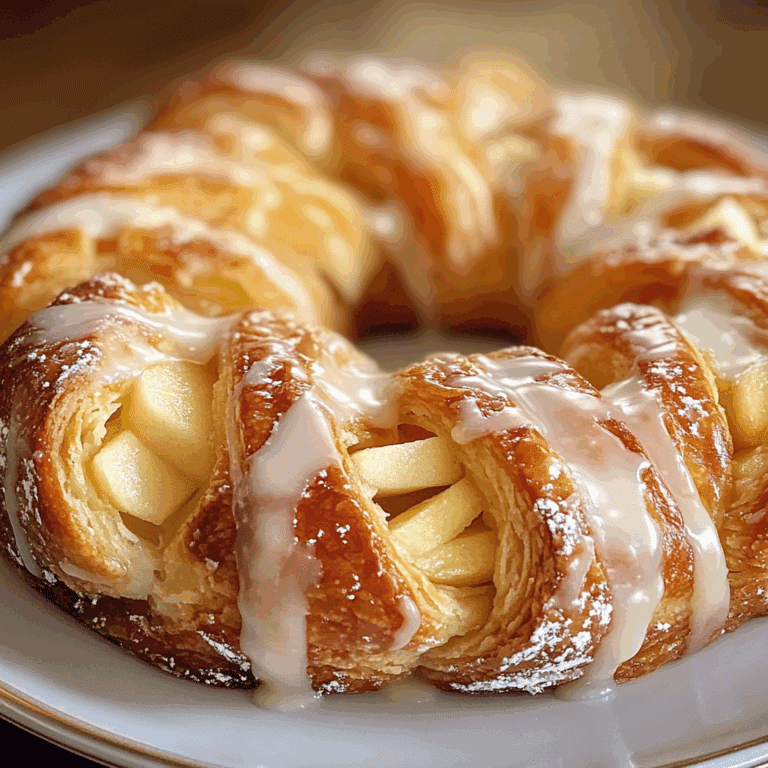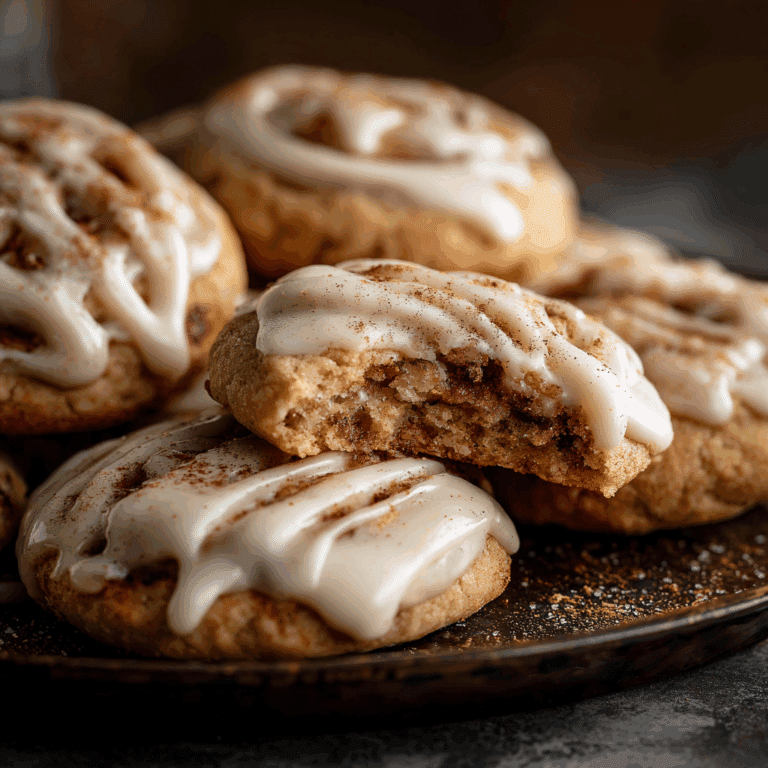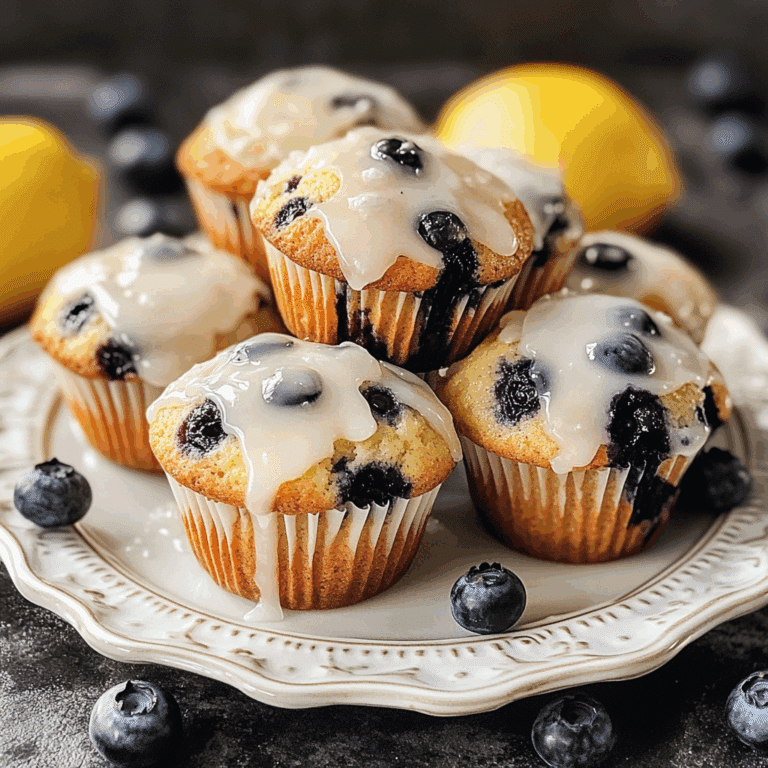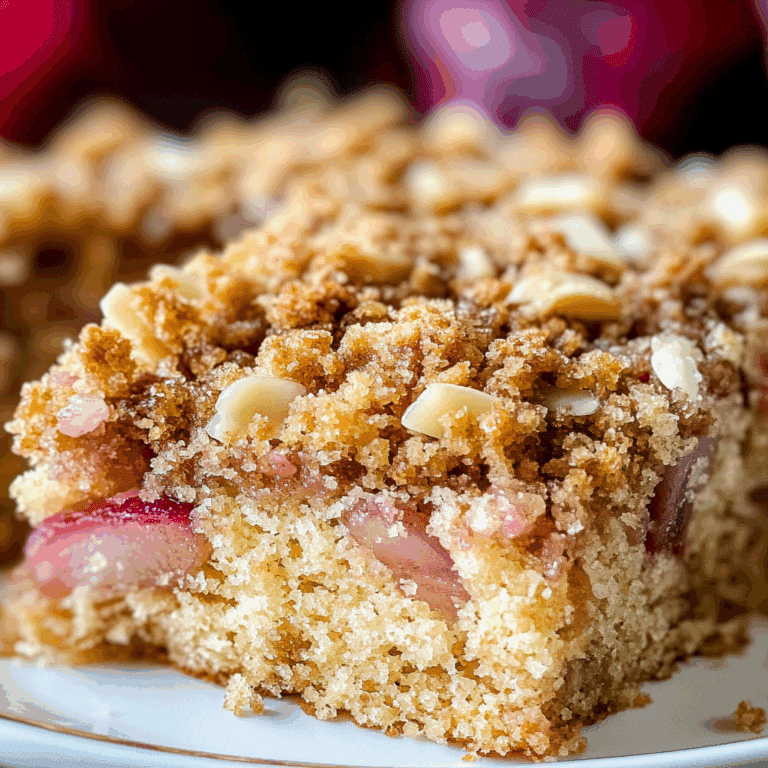Why Bread and Butter Pudding Is a Cozy Classic
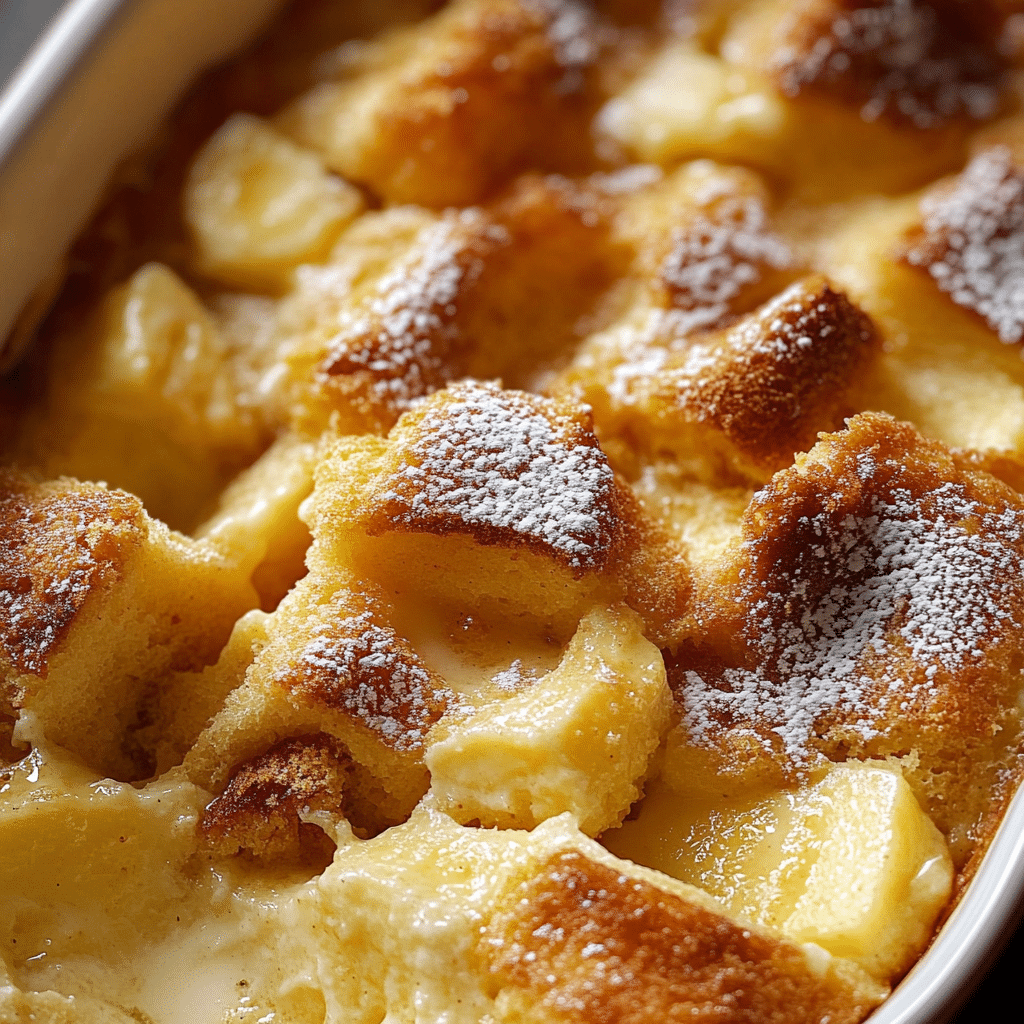
Bread and butter pudding is one of those timeless desserts that feel like a warm hug on a chilly evening. This classic dish brings together simple ingredients like bread, butter, eggs, cream, and a hint of sweetness to create layers of comforting custard-soaked bread that melt in your mouth. Whether you’re new to baking or a seasoned pro, this dish always delivers a satisfying combination of rich flavors and nostalgic charm that’s perfect for cozy nights at home.
Why You’ll Love This Recipe
- Easy to make: Uses simple pantry staples that are usually on hand, making it perfect for last-minute dessert cravings.
- Comfort food classic: Offers a warm, rich texture that feels indulgent but is never overwhelming.
- Versatile base: Easily customizable to suit different tastes or dietary needs without losing its magic.
- Budget-friendly: A wonderful way to transform leftover bread into a delicious treat.
- Perfect for any occasion: Works equally well as a casual family dessert or a charming dish to impress guests.
Ingredients You’ll Need
The beauty of bread and butter pudding lies in its straightforward ingredients, each playing a vital role in crafting the dessert’s signature taste and texture. The combination ensures a creamy custard, buttery bread, and just the right amount of sweetness and spice.
- Stale bread: Slightly dried bread is best because it absorbs the custard without becoming soggy.
- Butter: Used to spread on the bread, adding richness and helping the layers separate beautifully.
- Eggs: The backbone of the custard, binding the pudding and giving it that silky texture.
- Milk and cream: Combining these balances richness with creaminess.
- Sugar: Sweetens the custard to perfection without overpowering.
- Vanilla essence or pods: Infuses the pudding with a warm, inviting aroma.
- Spices (cinnamon or nutmeg): Adds depth and a cozy festive touch.
- Dried fruit (optional): Raisins, sultanas, or apricots bring bursts of natural sweetness and texture.
Variations for Bread and Butter Pudding
One of the joys of bread and butter pudding is how effortlessly it adapts to what you have on hand or your personal preferences. Feel free to experiment with these variations to create your signature version.
- Chocolate twist: Add chocolate chips or swirl melted chocolate between layers for a decadent upgrade.
- Vegan version: Swap dairy for coconut milk and use a flax or chia seed egg substitute for the custard.
- Fruit forward: Incorporate fresh berries, sliced apples, or pears instead of dried fruit for a juicy surprise.
- Spiced up: Experiment with cardamom, ginger, or allspice to bring new warmth to the flavor profile.
- Nutty crunch: Toss in chopped nuts like walnuts or almonds for added texture and richness.

How to Make Bread and Butter Pudding
Step 1: Prepare the bread
Start by slicing your bread into thick pieces and spreading a generous layer of butter on one side of each slice. The butter protects the bread from becoming too soggy while adding a wonderful richness.
Step 2: Layer the bread and fruit
Arrange the buttered bread slices neatly in your baking dish, butter side up, overlapping slightly. If you’re using dried or fresh fruit, sprinkle some between the layers to ensure every bite has a touch of natural sweetness.
Step 3: Make the custard
Whisk together eggs, sugar, milk, cream, vanilla, and your chosen spices until smooth. This custard mix is the foundation that ties every ingredient together and creates the classic creamy texture.
Step 4: Pour custard over the bread
Slowly pour the custard evenly over the layered bread, pressing down gently to encourage the custard to soak through every piece. Leave it to rest for 10-15 minutes so the bread absorbs the liquid.
Step 5: Bake until golden and set
Place the dish in a preheated oven and bake until the custard is set and the top is lightly golden and slightly crisp. This usually takes around 35-45 minutes, depending on your oven and the dish size.
Pro Tips for Making Bread and Butter Pudding
- Use day-old bread: Slightly stale bread absorbs custard better, preventing the dessert from becoming mushy.
- Butter every slice: This adds flavor and helps the layers stay distinct while baking.
- Don’t rush soaking: Let the custard soak into the bread for at least 10 minutes before baking for a creamy center.
- Experiment with spices: Small additions like cinnamon, nutmeg, or ginger can completely transform the flavor.
- Check doneness with a skewer: Insert a skewer to ensure custard is set but still moist inside.
How to Serve Bread and Butter Pudding
Garnishes
Freshly whipped cream, a drizzle of caramel or custard sauce, and a light dusting of powdered sugar can elevate bread and butter pudding to a restaurant-quality dessert instantly.
Side Dishes
Pair with a scoop of vanilla ice cream or a dollop of crème fraîche for balance, especially if your pudding is rich and sweet. A simple cup of tea or coffee also complements this classic treat beautifully.
Creative Ways to Present
Serve bread and butter pudding in individual ramekins or mason jars for a charming single-serve option that’s perfect for dinner parties or packed lunches.
Make Ahead and Storage
Storing Leftovers
Keep leftover pudding covered tightly in the refrigerator for up to 3 days. It stays moist and flavorful, making for an easy and satisfying next-day dessert.
Freezing
Bread and butter pudding freezes well—wrap portions tightly or store in an airtight container and freeze for up to one month. Thaw overnight in the fridge before reheating.
Reheating
Warm leftovers in the oven at a low temperature (around 325°F or 160°C) until heated through and the top is crisp again, or microwave for a quicker option but expect a softer top.
FAQs
Can I use any type of bread for bread and butter pudding?
Yes! While white or brioche bread works wonderfully due to its soft texture, you can also use whole wheat, challah, or even croissants for a richer pudding. Avoid overly dense bread as it might not absorb the custard as well.
Is bread and butter pudding suitable for dietary restrictions?
Absolutely. You can easily make it gluten-free by using gluten-free bread and swap dairy with plant-based alternatives. For a vegan version, replace eggs with flaxseed or chia eggs and use non-dairy milk and butter.
Why is my bread and butter pudding soggy?
If your pudding is soggy, it’s likely the custard ratio was too high or the bread was too fresh and absorbed too much liquid. Using slightly stale bread and allowing the pudding to rest before baking helps prevent this.
How do I avoid a dry pudding?
Ensure there is enough custard to soak the bread fully and don’t overbake. The pudding should be just set and still creamy inside – it will firm up as it cools.
Can I add alcohol or flavor extracts?
Yes, a splash of brandy, rum, or flavored liqueur like Grand Marnier can add depth to your pudding. Almond or orange extracts also complement the custard beautifully without overpowering the classic flavor.
Final Thoughts
There’s something undeniably comforting about a warm serving of bread and butter pudding fresh from the oven. This simple yet elegant dessert invites creativity while delivering guaranteed cozy satisfaction with every bite. Give this recipe a try and discover why it has remained a beloved classic for generations—perfect for sharing with friends and family on any night.
Related Posts
- Amazing Mini Pecan Pies to Satisfy Cravings
- Why Brownie Bottom Pumpkin Cheesecake Wins Fall
- How to Make the Perfect Pumpkin Cheesecake Roll
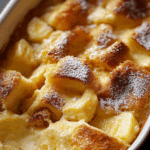
Bread and butter pudding
- Total Time: 55 minutes
- Yield: 6 servings 1x
- Diet: Vegetarian
Description
Bread and butter pudding is a classic, comforting dessert featuring layers of buttered bread soaked in a rich custard made from eggs, cream, and sugar. This warm, nostalgic dish is easy to prepare with simple pantry staples and can be customized with dried or fresh fruits, spices, and even chocolate. Perfect for cozy evenings or special occasions, it delivers a creamy, indulgent treat that transforms leftover bread into something truly delicious.
Ingredients
Bread and Butter
- Stale bread (thick slices, enough to fill your baking dish)
- Butter (to spread generously on each slice)
Custard
- 3 large eggs
- 100 g sugar
- 250 ml milk
- 250 ml cream
- 1 teaspoon vanilla essence or 1 vanilla pod
- 1/2 teaspoon ground cinnamon or nutmeg (optional)
Optional Add-ins
- 50 g dried fruit (raisins, sultanas, or chopped apricots)
- Chocolate chips or melted chocolate for layering
- Fresh berries, sliced apples, or pears
- Chopped nuts (walnuts or almonds)
- Spices like cardamom, ginger, or allspice for extra warmth
Instructions
- Prepare the bread: Slice the stale bread into thick pieces. Spread a generous layer of butter on one side of each slice. The butter helps keep the bread from becoming too soggy and adds richness.
- Layer the bread and fruit: Arrange the buttered slices in a baking dish, buttered side up, overlapping slightly. If using dried or fresh fruit, sprinkle it between the layers to evenly distribute sweetness and texture.
- Make the custard: In a bowl, whisk together the eggs, sugar, milk, cream, vanilla, and chosen spices until smooth and well combined, forming a creamy custard mixture.
- Pour custard over the bread: Slowly pour the custard evenly over the arranged bread slices. Gently press down with a spoon to encourage the custard to soak into every layer. Let it rest for 10-15 minutes to absorb fully.
- Bake until golden and set: Preheat your oven to 350°F (175°C). Place the pudding dish inside and bake for 35-45 minutes until the custard is set and the top is lightly golden and slightly crisp. Check doneness by inserting a skewer; it should come out clean with a moist custard inside.
Notes
- Use day-old or slightly stale bread to better absorb custard and avoid sogginess.
- Butter every slice generously to help keep layers distinct and add flavor.
- Let the custard soak into the bread for at least 10 minutes before baking for a creamy texture.
- Feel free to experiment with spices such as cinnamon, nutmeg, or ginger to change flavor profiles.
- Test doneness with a skewer to ensure the custard is set but still moist inside.
- Prep Time: 15 minutes
- Cook Time: 40 minutes
- Category: Dessert
- Method: Baking
- Cuisine: British
Nutrition
- Serving Size: 1/6 of recipe
- Calories: 350 kcal
- Sugar: 25 g
- Sodium: 150 mg
- Fat: 18 g
- Saturated Fat: 11 g
- Unsaturated Fat: 5 g
- Trans Fat: 0 g
- Carbohydrates: 36 g
- Fiber: 2 g
- Protein: 7 g
- Cholesterol: 130 mg
Keywords: bread pudding, bread and butter pudding, classic dessert, custard dessert, comfort food, easy dessert, baked pudding

